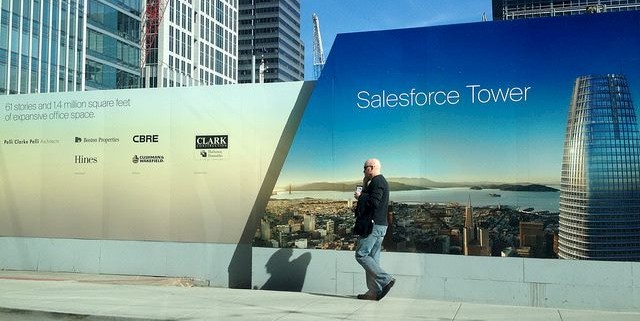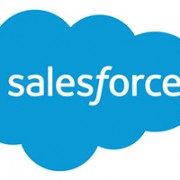Salesforce Versus Microsoft Dynamics CRM – Five Important Things to Consider including Salesforce Backup Solutions
You definitely want your business to grow, which is why you are looking for ways to offer more to your customers by opting for a reliable CRM vendor. Salesforce backup solutions are also essential to consider.
But, which are the top CRM solutions in the market that you have been keeping an eye on?
There is a strong likelihood that Salesforce and Microsoft Dynamics feature at the top of your list of popular CRM software solutions.
There are few other good CRM vendors apart from Salesforce and Microsoft Dynamics. But, businesses often end up comparing these two to make an appropriate choice.
The reason for this is that both solutions are quite similar in their features and both target similar types of businesses while offering similar end-user experiences.
So, if you are also confused between these two top CRM solutions, then you should probably continue reading.
In this article, our aim is to do an honest comparison of Microsoft Dynamics and Salesforce. This will help you choose the appropriate CRM solution based on your existing systems, your budget and the features you need.
Comparison of Salesforce and Microsoft Dynamics
Platform or Deployment Model
On the one hand, with Salesforce.com, you can only get the software deployed on a remote server, namely on the cloud.
This CRM software is a browser-based one that cannot be deployed on your company servers or on-premises. So, there is a clear lack of flexibility with Salesforce.
On the other hand, Microsoft Dynamics CRM software can easily be deployed on the cloud (SaaS) or on-premises.
You can get this solution hosted privately on your company servers. It thus offers a more flexible platform and you can choose the deployment model that best suits your business.
Extensibility and Integration
Salesforce has a large number of applications in the Salesforce AppExchange. Based on the type of your industry, these give your business the flexibility to build your CRM or optimize it.
In comparison, Microsoft Dynamics has fewer applications, even though the count is growing steadily.
Yet, Microsoft Dynamics offers a lot of customization options, using innovative configuration tools. It also supports complex customizations with easy integration into your CRM.
It further offers slightly better freedom and flexibility with the availability of private hosting and on-premises options for integrating custom apps or third-party apps into your CRM.
Similarly, Salesforce offers you the ability to get custom solutions built on the Salesforce1 platform, through its partner program that connects businesses with developers.
So, it is clear that both these CRM software solutions offer unique ways to get customization done as per your needs.
Development
To use Salesforce, your developers need to be aware that it has its own programming code named “Apex”. This code is exclusively used for creating business applications for your on-demand environment on the Salesforce.com platform.
Since Apex is a non-universal programming language, working with it does somewhat get you locked in with Salesforce.
For example, it would not be easy to get your Salesforce solution extended to a new solution for customizations done using Apex.
The exit costs will thus be higher for you. It is true that Java and .Net applications can be integrated with this solution, but it is only possible if you pay an additional amount or enroll for the Salesforce Enterprise plan.
In comparison, Microsoft Dynamics CRM is quite flexible as far as the development or programming language is concerned. Be it Java, .Net, HTML or so on, this software solution is open to all web development standards.
You can use any of these to build apps and manage processes for your business.
Pricing and Contract
This is indeed one of the parameters that should feature in a comparison of Salesforce and Microsoft Dynamics. To start with, you should know that Salesforce is a bit pricier than Microsoft Dynamics.
If you opt for the cloud deployment model with either of the two CRM software, then you need to pay a monthly subscription fee for every user login.
For Microsoft Dynamics, you also have the option of the on-premise model, for which a perpetual license fee has to be paid upfront for every user.
For cloud deployment with Salesforce, you need to enter into a year-long contract that will be renewed on an annual basis.
For cloud deployment with Microsoft Dynamics, you need to subscribe and renew your subscription on a monthly basis.
For on-premises deployment with Microsoft Dynamics, you further need to sign a license agreement upfront to get ownership of the CRM software. You can then have a separate contract for premium support and varied terms.
The pricing model for the various packages with Microsoft Dynamics CRM is listed below:
- Professional – $65 per user per month
- Sales Productivity – $85 per user per month
- Enterprise 360 Promo – $150 per user per month
The pricing model for the various packages with Salesforce CRM is listed below:
- SalesforceIQ or Group – $25 per user per month
- Professional – $65 per user per month
- Enterprise – $125 per user per month
- Unlimited – $250 per user per month
Backup
If you choose Microsoft Dynamics as your CRM software, then you need to ensure the backup of all important information and you must maintain a copy off-site.
For this purpose, a backup plan has to be executed for all the Microsoft Dynamics CRM components and services to ensure the maximum data can be recovered in the event of any failure or data loss.
The backup plan should be as follows:
- All the Microsoft Dynamics CRM program files can be backed up (a copy to be stored off-site) from their default location at C:\Program Files\Microsoft CRM\
- All the Microsoft Dynamics CRM website files need to be backed up (a copy to be stored off-site) from their default folder location at C:\Inetpub\wwwroot
- For the backup of all Microsoft Dynamics CRM customizations, you can make use of the Exports Customization tool. Also, before you make any changes to these customizations, make a backup.
- You also need to make a backup of all the Microsoft Dynamics CRM server database files.
With Salesforce.com, you still need to make backups of your data locally to be able to recover your data, instead of only relying on Salesforce for the data recovery (If you rely on Salesforce support for the data recovery, then you have to pay additional fees).
The problem with the above is the manual effort required for local backups and the limited frequency of data export with Salesforce.
This increases the risk of data loss for your business. To avoid loss of data, you need to make backups more frequently with a third-party alternative.
Such backups happen automatically on a daily basis with unlimited storage available for use. Thus, you need not spend additional money for the storage of your enterprise data, even if it grows continuously in the future.
As the third-party backups take place on a daily basis, the risk of data loss between any two backups is considerably reduced.
We hope that the above comparison of the features of Salesforce and Microsoft Dynamics proves useful to you and help you make an informed decision.









